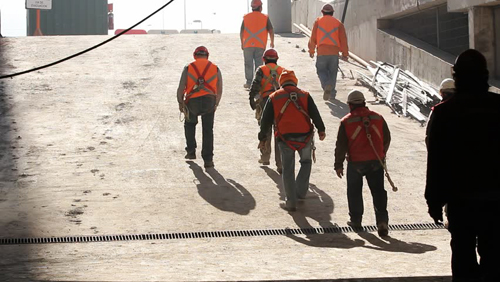 News of the caravan of migrants coming up from Central America toward the United States has once again put the subject of undocumented immigration front and center just as voters head to the polls across Texas and the nation.
News of the caravan of migrants coming up from Central America toward the United States has once again put the subject of undocumented immigration front and center just as voters head to the polls across Texas and the nation.
President Donald Trump’s hardline stance may drive his base to the polls, but even those folks want a long-term solution — not just rhetoric.
For many years, I’ve fought to bring attention to one of the roots of the problem: The breakdown of the employer-employee relationship that creates loopholes for abuse of workers and taxpayers.
Contractors who pay immigrants under the table to deliberately skirt immigration and employment laws are engaged in “misclassification” or “payroll fraud.” It involves employers pretending their workers are “independent subcontractors” when in reality they are employees who should be compensated accordingly and given benefits such as accident insurance and a retirement plan.
It’s been going on for decades and is the way most undocumented workers are paid. It’s cheating plain and simple. This misclassification not only allows those bosses to avoid immigration laws but also gives them a competitive advantage because their overall costs are at least 25 percent lower than firms following the law.
Texas and other states could have never enjoyed the growth we’ve seen over the past 30 years without these immigrant workers. We need them even more today, and what gas prompted me to write about this issue is what I see on the horizon. The current approach is not sustainable.
I’ve always favored strong border security. After 9/11, it’s now imperative the government knows exactly who is in the country. We now have technology to accomplish that goal without a wall and instead with metrics that can identify everyone in the United States, just as other countries already do.
Trump has put a virtual stop to undocumented workers coming into the United States. It’s gotten too expensive and too dangerous to make the trip, so the numbers are way down.
The fact that our borders are more secure than ever and workers in some industries such as construction are getting older and retiring, means that without a solution the major source of labor will be American-born workers.
As the CEO of a company doing construction in several southern states for more than 50 years, I can tell you that recruiting young men and women who want to go into the trades is exceedingly difficult. For example, companies that pay construction workers by the hour and offer no benefits are now competing for a workforce with Uber, offering much the same employment arrangement except the work can be done in the comfort of an air-conditioned car or truck.
Even with good wages and a career path, there are so many career options that construction falls to the bottom of the list.
So, who will build the projects and infrastructure of the future?
That’s a question facing construction firms and communities all over the United States. According to the Associated General Contractors of America, 80 percent of construction companies say their No. 1 number one concern is the skilled worker shortage.
Here are a few things that need to happen immediately.
Workers who can pass a background check, be fingerprinted and entered into an already existing e-verification system should be given a work permit. This would not be amnesty, but a “guest worker” program. They would be required to work for an employer who pays and matches payroll taxes. If they truly are independent subcontractors, they would need to pay self-employment taxes and treat their own workers as employees and deduct payroll taxes. Not every worker can be an independent subcontractor. Someone must be the employee.
At some point, Congress and the president must pass a comprehensive immigration bill. When that will happen is unknown.
Rather than deal with that now, this first step of identifying and taxing unauthorized workers makes sense whether you’re a conservative Republican, a liberal Democrat, or something in between.

